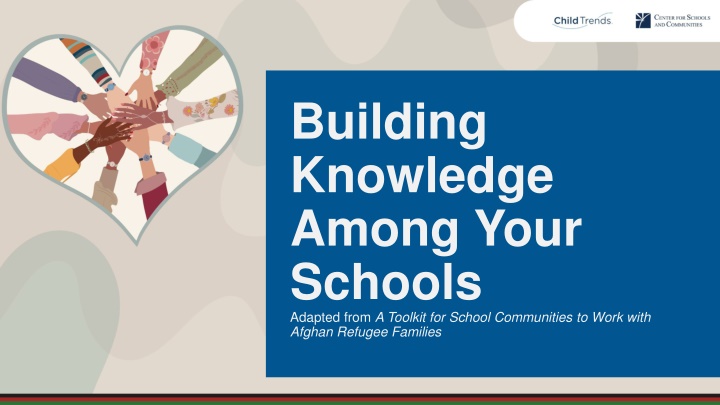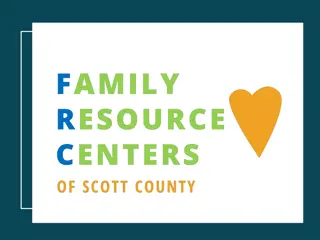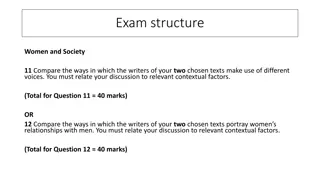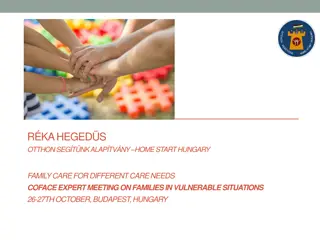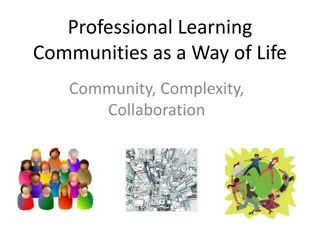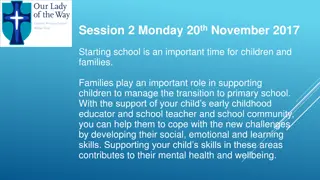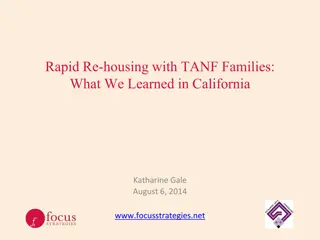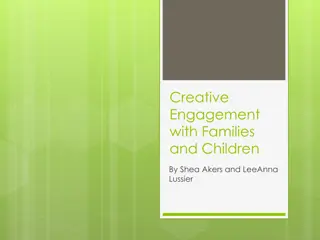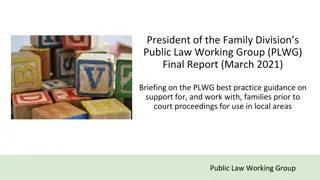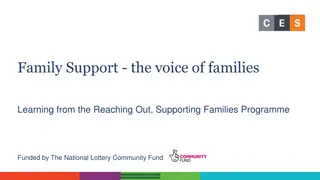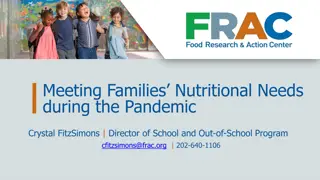Building Knowledge for School Communities Working with Afghan Families
Differences between refugees, asylees, and immigrants, pathways for Afghans in the US, humanitarian parolees, and the role of resettlement agencies in supporting Afghan families.
Download Presentation

Please find below an Image/Link to download the presentation.
The content on the website is provided AS IS for your information and personal use only. It may not be sold, licensed, or shared on other websites without obtaining consent from the author.If you encounter any issues during the download, it is possible that the publisher has removed the file from their server.
You are allowed to download the files provided on this website for personal or commercial use, subject to the condition that they are used lawfully. All files are the property of their respective owners.
The content on the website is provided AS IS for your information and personal use only. It may not be sold, licensed, or shared on other websites without obtaining consent from the author.
E N D
Presentation Transcript
Building Knowledge Among Your Schools Adapted from A Toolkit for School Communities to Work with Afghan Refugee Families
What is the difference between a refugee, an asylee, and an immigrant? An immigrant is any person lawfully in the United States who is not a U.S. citizen, U.S. national, or person admitted under a nonimmigrant category. A refugee is a person living outside their country of nationality who is unable or unwilling to return to that country because of persecution, or for a well-founded fear of persecution. An asylee is a person who meets the definition of refugee and who is already present in the United States or is seeking admission at a port of entry. An asylum seeker is someone who is seeking international protection from dangers in their home country (like a refugee), but whose claim for refugee status has not yet been determined legally.
Are all Afghans in the United States refugees? No there are different pathways to resettlement Afghans can take depending on their needs and qualifications. Visas: The United States provides immigrant visas based on family ties, employment, adoption, special immigrant categories, and the diversity visa. Refugee status: Afghans are eligible to resettle in the United States through the U.S. Refugee Assistance Program Priority-1 if they qualify as refugees. Afghans being considered for refugee status must demonstrate that they were persecuted or have a well-founded fear of persecution. Cooperation with U.S. entities: Some Afghan nationals are eligible for the Afghan Priority-2 Program. Afghans under Priority-2 do not have to demonstrate persecution; rather, they are eligible because their employment is related to the U.S. government s efforts in Afghanistan.
What does it mean to enter the United States as humanitarian parolees? Most Afghan nationals arriving as part of the 2021 evacuation effort under Operation Allies Welcome were paroled into the United States on a case-by- case basis for two years. They were eligible to receive work authorization during their parole and had to meet certain criteria. Humanitarian parole status is temporary and is not a guaranteed pathway to a more permanent status. Afghan students and families who have spent time as parolees are likely to have experienced additional stressors due to that uncertainty.
What is a resettlement agency and how can they help Afghan families? Resettlement agencies welcome newly resettled persons and connect them with important services and resources. They initially sponsor a refugee or family entering the United States and help orient them to life in the United States by providing access to food, shelter, and health services. They can also support families by helping them register children and youth for school and connecting them with programs to support their integration into the school community.
What language do Afghans speak? Dari and Pashto are the official languages of instruction in the Afghan public education systems. Typically, people communicate more effectively in one or the other. There is rich language and ethnic diversity in Afghanistan. Schools should confirm which languages are preferred by Afghan families.
What is the historical and contemporary landscape of the school system in Afghanistan? 1960s 1980s Making education compulsory and increasing access for all students, including girls 1990s The rise of the Taliban, an extremist group, to power in Afghanistan Girls schools closed, women prohibited from attending university, greater emphasis on religious studies 2001 2020 After the fall of the Taliban, school enrollment increased Most schools were segregated by gender, with boys and girls studying separately 2021 Present The return of the Taliban reimposed restrictions on education, including bans on girls attending secondary school and replacing secular curriculum with religious studies
What is the school system like in Afghanistan? Primary education First cycle (grades 1 through 3): Subjects covered include religious studies, first language (Dari or Pashto), math, arts, and physical education. Second cycle (grades 4 through 6): Same subjects as the first cycle, in addition to science, history, geography, and second language (Dari or Pashto). At the end of grade 6, students must pass an exam to move on to secondary education.
What is the school system like in Afghanistan? Secondary education First cycle (grades 7 through 9): Subjects covered include religious studies, local languages, math, science, social studies, foreign language, and physical education. At the end of grade 9, students must pass an exam to continue to the next cycle. Alternatively, students may choose to pursue technical or secondary vocational school. Second cycle (grades 10 through 12): Continues most of the subjects taken in the first cycle. Students must also choose to specialize in natural science or social studies. At the end of grade 12, students must pass a graduation exam to receive a 12th grade graduation certificate. Students must pass another exam to gain admission to a university.
What is the school system like in Afghanistan? At both the primary and secondary levels, classes are generally teacher-centered, emphasize rote memorization, and focus on whole group and lecture-based instruction. This means that small group work and student-led and inquiry-based learning, which are common in U.S. classrooms, may be new to many Afghan students.
Why is culturally responsive family engagement important when working with Afghan families? Engaging refugee families can: help children and parents adapt to their new country and educational system, provide a stable and supportive environment that can improve children s social-emotional well-being, boost children s learning and their academic achievement, and build trust between families and schools, fostering collaboration and mutual understanding.
Why is culturally responsive family engagement important when working with Afghan families? The culture of U.S. schools and their expectations for family engagement may be new to some families. The transition to a new community may be uniquely stressful within Afghan families, which tend to live in multigenerational homes, with three to four generations living together in one home or property. Gender roles are important in Afghan families and may be considerably different than gender roles in their new communities.
Why is it important to use trauma-informed approaches in my work? Using trauma-informed approaches in schools can: create a safe, supportive, and inclusive environment that fosters a sense of belonging for refugee children critical for their integration and adjustment to a new culture, provide refugee students with strategies to label and manage their emotions, and equip refugee students with resilience-building skills that can help them navigate future challenges effectively
